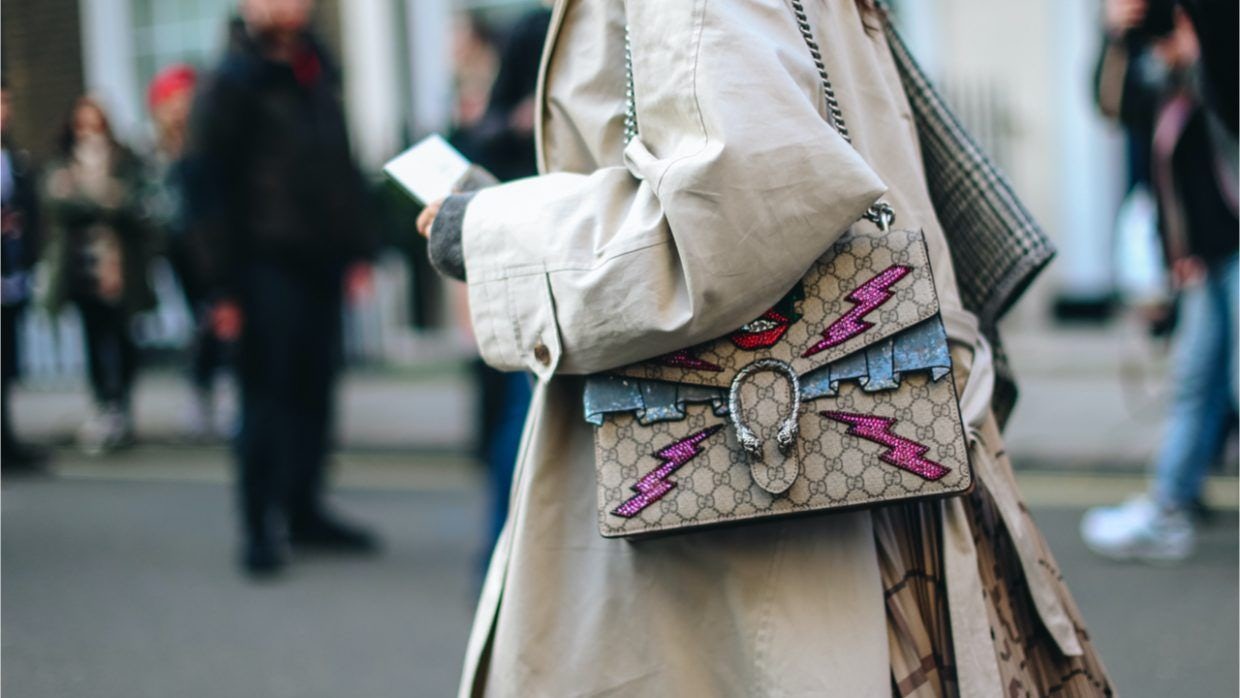The American designer Rick Owens has taken to showing off his well-toned body online during the lockdown, undergoing rigorous and impressive work-outs. Luxury titan Dior is taking fans into their factory via video updates. London-designer and menswear creative director at Fiorucci, Daniel W. Fletcher — and Netflix’s Next in Fashion contestant — went one step further, taking us into his home with an intimate video for media publication The Guardian.
In China, brands have been also flexing their might online: livestreaming and “see now, buy now” showcases are growing, while the showrooms supporting Shanghai Fashion Week have been extended to deliver virtual appointments to buyers. Elsewhere, showcasing platforms like Xcommons launched a next generation virtual experience, which is winning over local media and fashion fans alike.
Aside from the COVID-19 outbreak, the value of being online has grown exponentially in recent years; now, with labels stuck in lockdown all over the world they are facing a genuine battle to survive amid store closures, staff layoffs, and cancelled orders. Those that are not digitally savvy will struggle more than their counterparts to remain in business past the disruptions of COVID-19. With no confirmed fashion weeks in sight, and the luxury industry losing billions in value, companies are acutely aware they can still win over consumers virtually and remain relevant.
Some brands depend on marketing departments to strike a fine balance, others like emerging designers are depending on their own intuition to create content. China’s locals have shown themselves agile sponges of citizen reactions, but Western brands on the mainland continue to lag behind. Given how fast and vocal netizens are to react, how much content should companies be sharing at this time? And, how much does the consumer really want to see?
The Pros and Cons of Being Personal#
Marketing during crises can be a minefield, in particular in China, where many global companies have fallen foul. The celebritization of designers and creative directors often adds to the issues when brands rely on the personal charm of those stars. Small or big, businesses need to make sure their marketing teams understand the objectives of any change of practices, and to be fully prepared for any potential emergency. Yishu Wang, a China marketing consultant, says many independent designers do very well on social because they’re “very close to their fans.”
Indeed, having a small team means less bureaucracy and therefore they can be more agile. “The decision-makers are closer to their customers and fans. So when they see their followers change, they can adapt quickly. Also, the smaller the brand, the more personal they can be on social. When we’re in crises, being more personal can bring brands and fans together.”
Wang also suggests that it’s not necessarily about whether you have a dedicated marketing team or not. Rather, it is more about if the brand manages to, “respond quickly enough and in a clever way.” Several smaller brands have been more willing to open their doors, share their routines, and even cookery tips on apps. However, this candid exposure of a smaller, young brand’s daily activities is likely in keeping with an already constructed persona and an extension of this character.
Being lighthearted is an offshoot that is working out well for many brands too: Diane Von Furstenberg has been generating playful content based on fans' makeovers; on WeChat, Burberry quizzed customers on its classic trench coat construction offering a prize in return; the campaign went down well receiving 50,000 interactions.
Designers such as Mary Katrantzou and Manalo Blahnik are offering sketches that fans can color; Michael Kors is asking customers to DIY their leather bags by posting a step-by-step guide on how to draw on the leather on WeChat, while also selling the leather-friendly paint through their Tmall store; the how-to guide has received 15,000 clicks.
Pivots in content#
While pivots are often necessary, they are best received when an extension of an existing brand identity or product. For Wang, at a time like this, “social listening” is a good way of finding out what you should be doing. She added that she has seen designers on Instagram ask fans directly what they want to see, and this can work as well as any specific tools to monitor their target audience.
“I think it’s important for brands to show humanity, and to show that we're in this together. They should take a close look at their existing identity first and see if there are any elements they can explore further to connect with the audience. Not everyone needs to do workout tutorials, but if it shows more of a human side of the brand by expanding the brand identity, then I think it would be a good approach.”
On Instagram, Prada’s launch of a new digital series, Possible Conversations, is a logical extension of the brand's deep underlying connection with cultural initiatives including Fondazione Prada, which should resonate well with its online community.
Wang continued, adding: “If craftsmanship is a crucial part of the brand identity, for example, then talk about crafts that people can do at home would be a good idea.” Dior’s Weibo is currently featuring a substantial amount of videos and pictures about their designers, stories behind the product, and histories of products such as jewelry and watches. Comments on these have been quite positive, mostly lauding the craftsmanship and welcoming the opportunity to see the story behind the brand.
However, pivots do not always work out as planned. Dior has received mixed criticism for recent Weibo posts related to the brand’s transition to mask-making at the Baby Dior factory in France. Pictures of workers in action received mixed results from netizens, with some of the comments criticizing the craftsmanship or suggesting the masks don't live to the standard of a luxury brand. “Last century craftsmanship,” was one comment and another said, “I really doubt if these single-layered masks could actually perform its function.” One slightly scathing remark dismissed the additional work with: “I know Dior meant well, but please get back to do what you do best.” One netizen even asked, “how much [are] you willing to pay for a Dior Mask?”
New Innovations#
Dior has seen success with the launch of a virtual shopping collaboration with the key Chinese influencer, Angela Baby. Netizens were generally very positive about the video, which has so far received over 73,00 impressions on Weibo. Fans said: “Angelababy can master every look from elegant, fashionable to sweet!” and “I look forward to seeing more pictures from her tour.” One more telling comment detailed why exactly the collaboration has been so successful. “The style of the video combines well with Dior's design concept and makes people want to shop!”
It is this tie-up between real life and the virtual world that is particularly welcome right now when stores are closed. Marketing consultant, Xinyao Qiu stated: “You need to replicate your brick-and-mortar online and a virtual experience like this can connect you to your consumer. This is also useful as companies can check the sales trade generated by this shareable content. It’s also quite a safe choice if livestreaming is too wild for your brand. If you do nothing though you lose your voice. Dior is being quite smart here — and I know they are even busier than before as they are relying on this.”
While Dior and others have shied away from being innovative in terms of adapting to livestreaming, Louis Vuitton has not — rightly recognizing its importance in China. However, the results were mixed. Wang saw it as a good example of a luxury business to put more focus on digital during COVID-19 and “making efforts to localize for China.” She said the execution went wrong somehow, “leaving many consumers teasing the session.” She also said it didn't look “on-brand for Louis Vuitton.” Also, “unless you saw it on the official account, you wouldn’t tell it was the brand’s official livestream.”
While there were issues of inconsistency between brand identity and actual online visuals, Qiu was upbeat about their conviction. “They didn’t achieve the desired aesthetic sense, yet this was such a pioneering move from them. This is the only way they can be vocal at this moment as offline sales are up to 60% down from the same time last year.” As it was the first luxury brand to host a standalone livestreaming session in China, this will undoubtedly push more conservative labels to trial the method and improve its capabilities.
Qiu thinks fashion companies could be doing more to be more innovative, however. “I didn’t see any brands work with any particular influencer in an official way to produce more relevant content. I know some have been doing co-livestreams on Instagram but let’s see how the connection between them and influencers plays out at this time.” Indeed by partnering with an influencer, a more traditional brand can be seen to be revealing more online without affecting their individual profile.
Keeping quiet#
From playful or paused — many are simply choosing to be quiet right now. As Qiu observed, Tiffany has reduced its contact volume to a few posts a month on Weibo, as have Cartier and Hermès; yet there might be an underlying reason for this: ramping up VIP client communications.
“I think a lot of houses that are quiet are putting more effort into personal communication with their core client. E-commerce is one of the most effective channels for luxury brands, in particular during the lockdown, as in many cases, VIP clients are still the most important consumer in a brand’s portfolio. 1% of customers spend 99% of revenue, and therefore, allocating budget to this area is a cost-effective strategy.”
Where numerous international groups in China miss out is a lack of this hands-on, reactive quality. Qiu who has previously worked with luxury retailer Harrods, wants to see this crisis as an opportunity for companies to place more responsibility in the hands of teams on the ground.
“They translate global content and it can be more local. But it only still tells one story or one version of localized content,” Qiu explained. “ I can’t see any more freedom now in a time of an emergency, but I hope that in the future the local china teams will have the ability to create more localized content.”
Regardless of what brands are doing now, they should also be thinking in the long term. Wang suggests they ask themselves a number of questions such as: “Who do they want to be after the pandemic? Will the changes they're making now be in line with who they are down the line?” While the advice is to think post-virus, it’s also vital to acknowledge the importance of listening to what consumers want and producing it in a way that is authentic to your brand DNA.

